Praça Martim Moniz
I started the next morning by walking around the Praça Martim Moniz, near which I was staying. The square is located at the junction of three districts - Mouraria, Anjos and Baixa. In medieval Lisbon, there were certain quarters for national communities. After the Reconquista, the northwestern slopes of the hill on which St. George's Castle is located became a Muslim ghetto. Since then, the Mouraria area has become a haven for immigrants: first slaves freed in the 18th century began to settle there, then Galicians, in the nineteenth and twentieth centuries immigrant communities from Portuguese colonies were formed, and at the end of the twentieth century representatives of the peoples of South and East Asia appeared here. Close communication between different peoples has played an important role in the cultural development of Lisbon and Portugal. Fado music, for example, was created by the proximity of neighborhoods of West African migrants and the indigenous Lisbon poor.
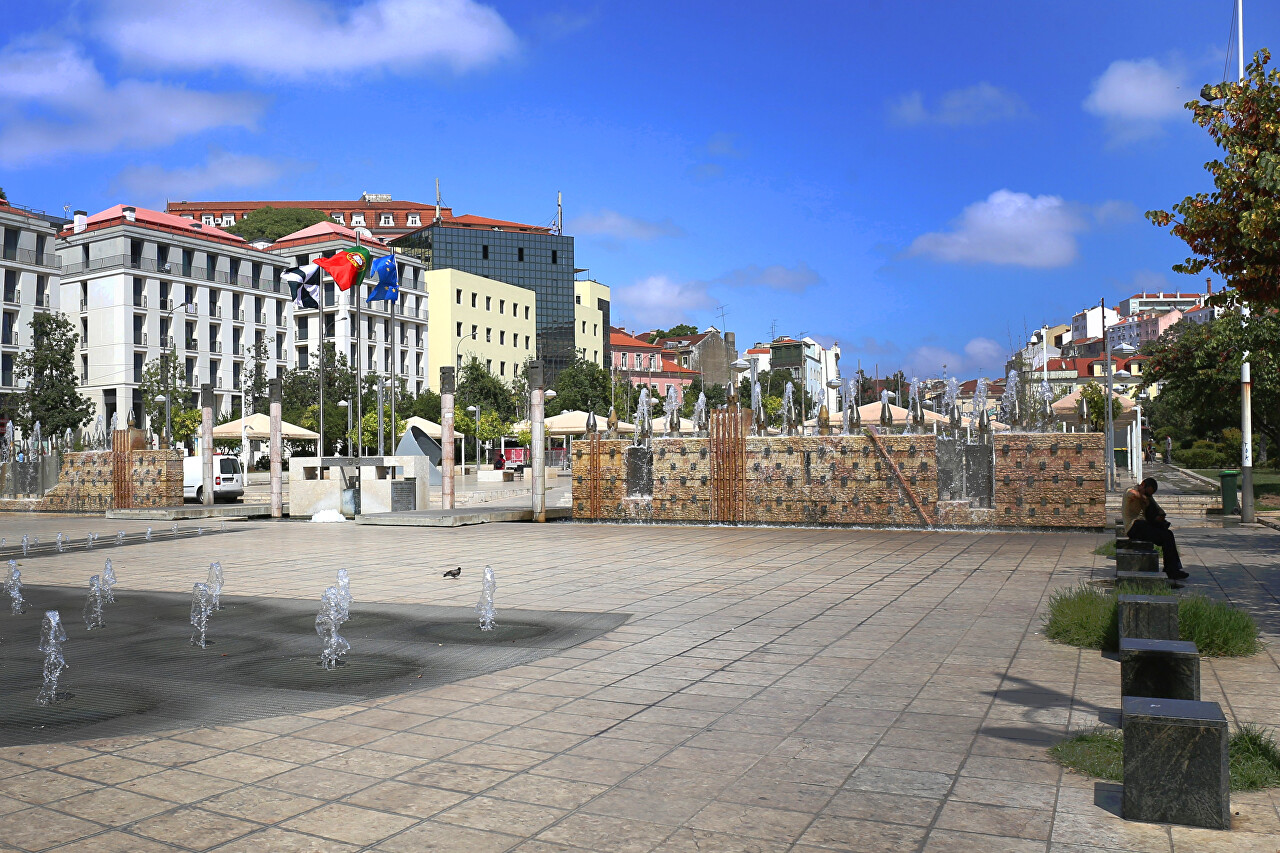
In the 1940s, city officials decided to link Avenida Almirante Reis with Rossio through the lower Moruaria neighborhoods. It was a slum area, so for hygiene reasons, they decided to demolish it completely. So there was the Martim Monish Square, which for a long time was a huge wasteland, where a spontaneous market was formed. Only in 1980 was an open tender announced for the development of a plan for the improvement of this space. The winner was the project of Carlos Duarte and Jose Lamas, whose main idea
was to turn the square into a center of trade in colonial goods. The
Centro Comercial da Mouraria and Centro Comercial do Martim Moniz, as
well as the Hotel Mundial, were built, the area was allocated to small
merchants and many different retail outlets quickly appeared on it. Over time
, crowded with people of low incomes, shopping galleries have become a hotbed of crime and drug trafficking. In
the twenty-first century, the authorities put an end to this by
eliminating trade and turning the square into an open public space.
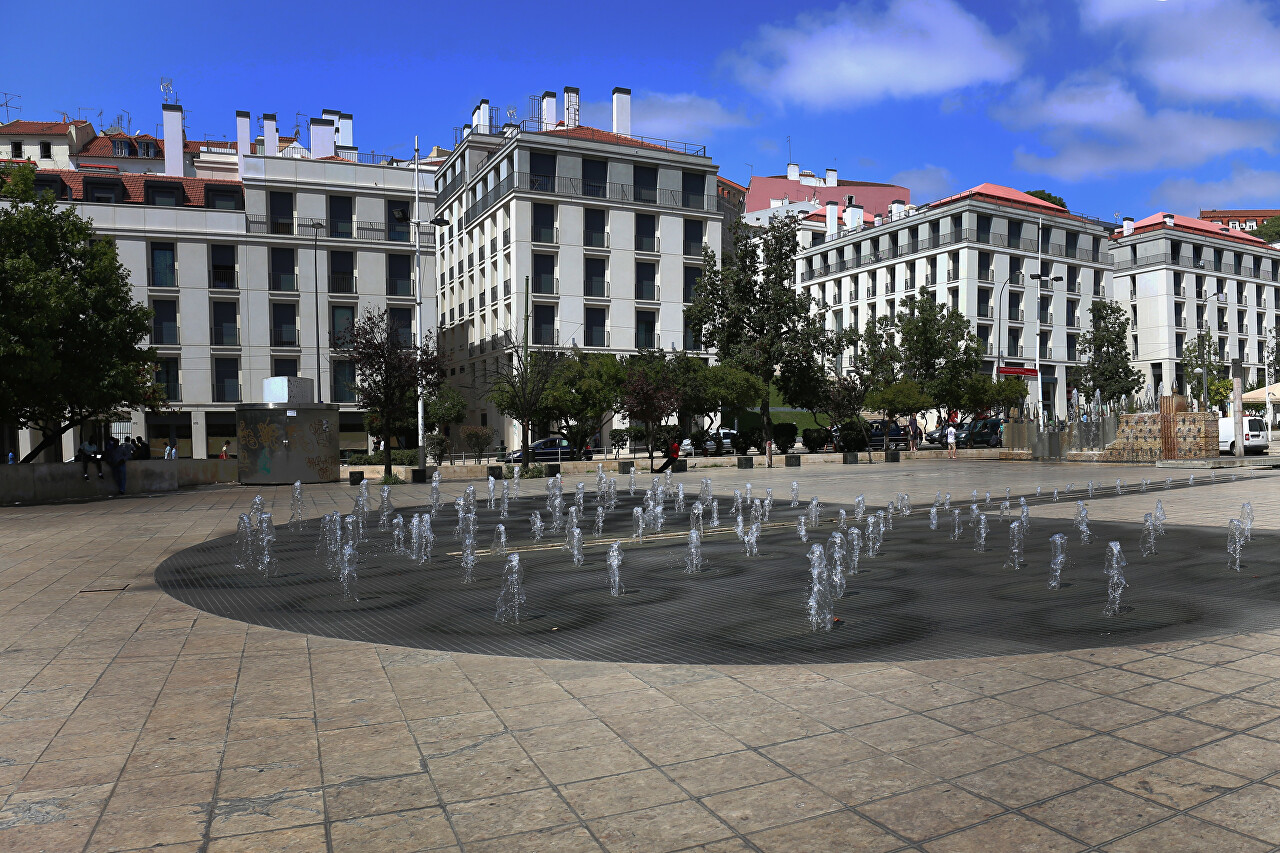
The square is named after a noble knight who became famous during the Reconquista. In 1147, Christian troops under the command of King Alfonso Henriques besieged the fortress of Lisbon, occupied by the Moors. A brave warrior, being in the vanguard of the attackers, saw how the enemies were closing the castle gates. To prevent this, he squeezed through the remaining gap between the gate doors, preventing them from closing with his body. Of course, the hero was killed, but his act allowed his companions to enter the fortress. Documentary evidence of the feat has not been preserved, and the origin of the brave knight is also very vague. It is possible that this is just a legend, however, Martim Moniz is considered a Christian martyr. The fountain on the square is based on this story-the composition is a stylized fortress wall with knight's helmets on the crest.
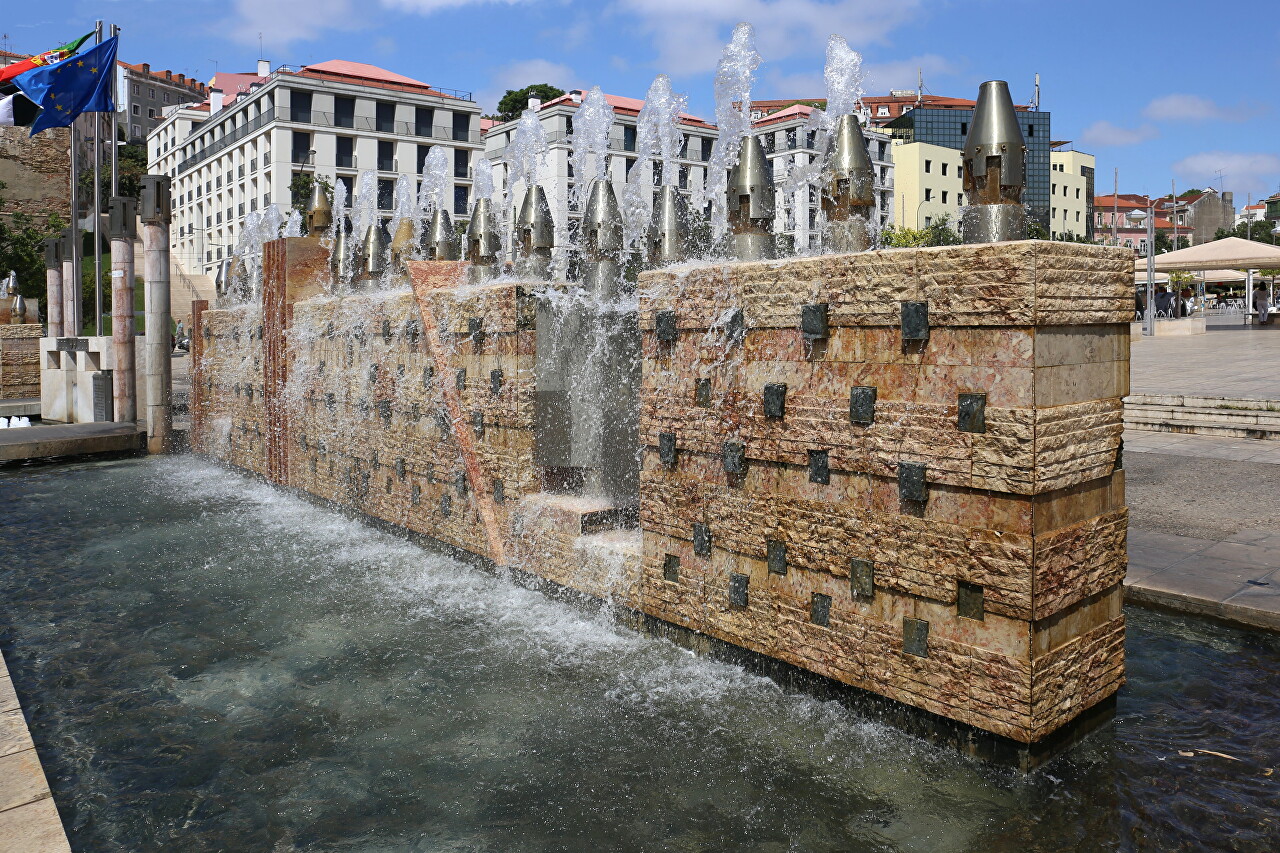
Next to the fountain, a group of South Asian women are warming up early in the morning. The square is known as the multicultural center of Lisbon - the surrounding neighborhoods are inhabited by people from all over the world.
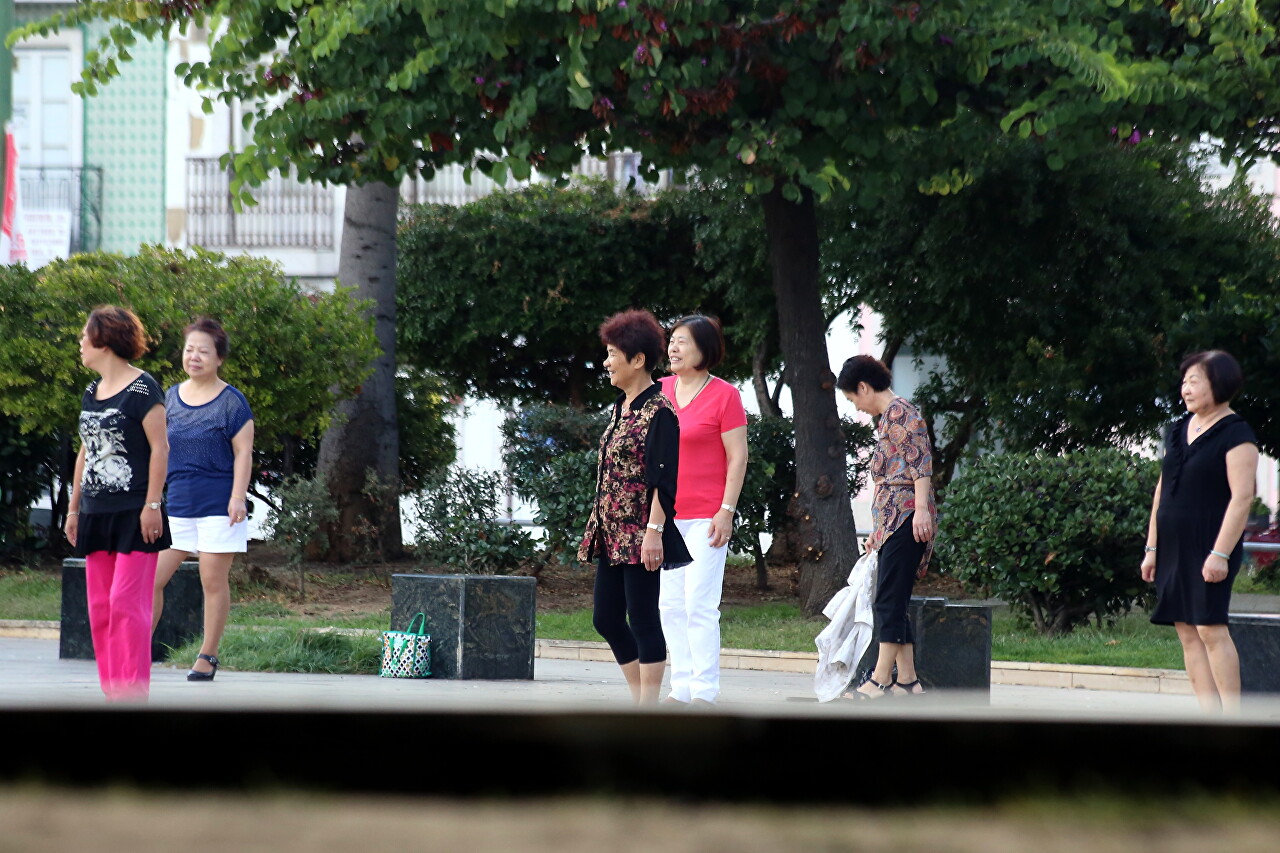
By the way, my guest house on Rua de Palma is surrounded by Chinese shops that sell a wide variety of national food with national labels. The square itself is surrounded by many restaurants offering two dozen national cuisines.
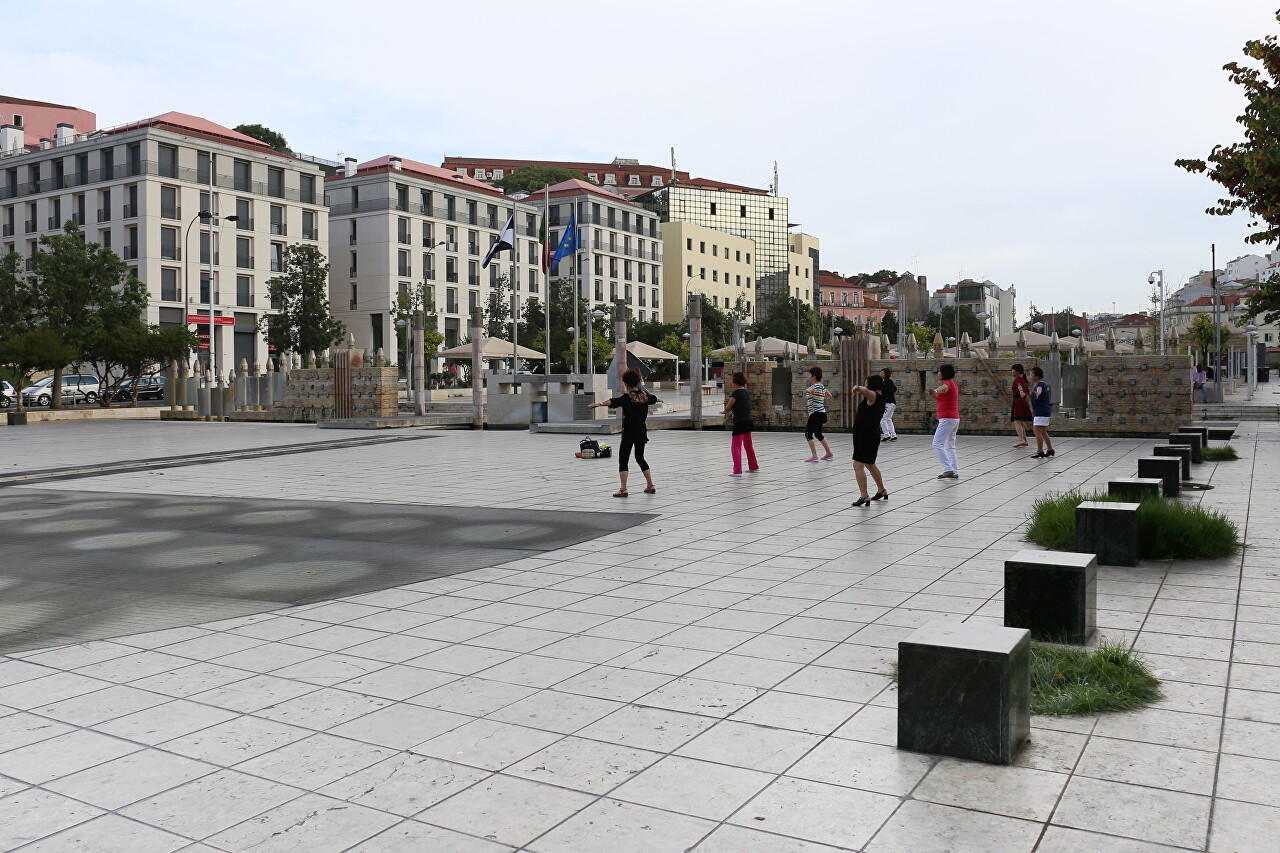
There are several cafes on the square itself. It is morning and they are closed, and in the evening you can meet representatives of various peoples living in the blocks around the square. Walking here in the evening, I did not notice that people were grouped along ethnic lines - multinational companies were sitting at tables and on benches, and there are no national borders for modern youth.
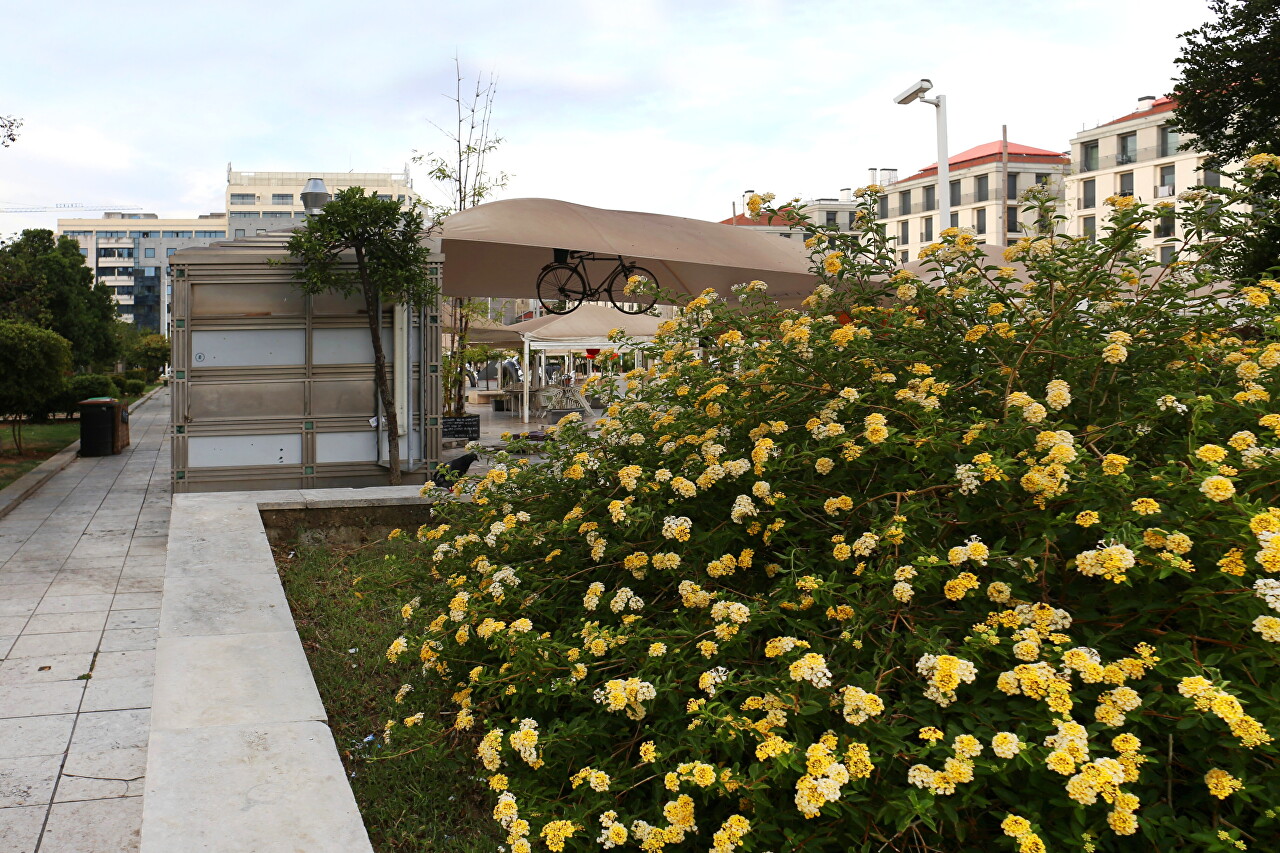
While preparing for the trip, I read all sorts of horror stories about the surroundings of Martim Monish Square, that it is supposedly a hotbed of drug addiction and ethnic crime, but for several days of living in this area, I did not observe anything like this.
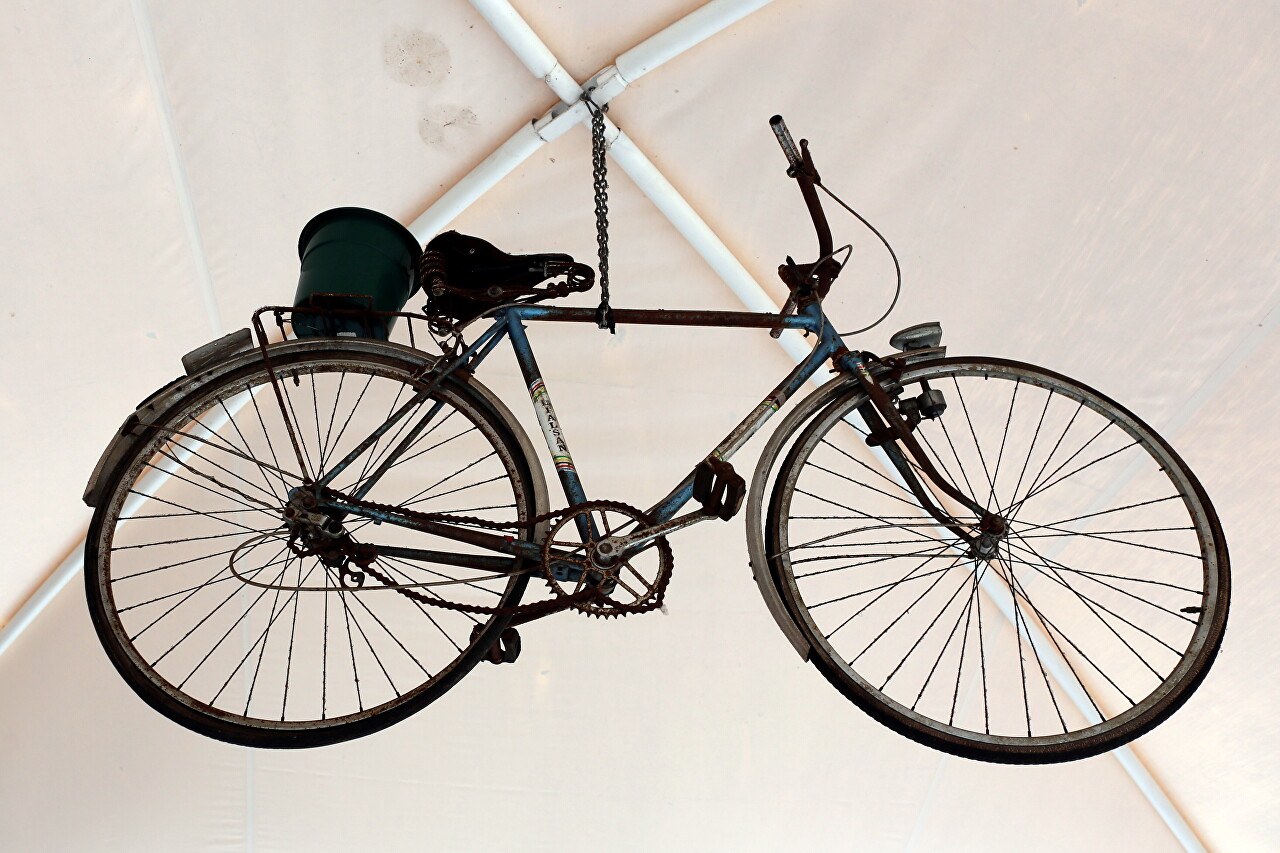
There are several pieces of modern art on the square. Here you can see an amazing installation depicting a snake or dragon. Thanks to this, the square even received an unofficial name - Dragon Square.
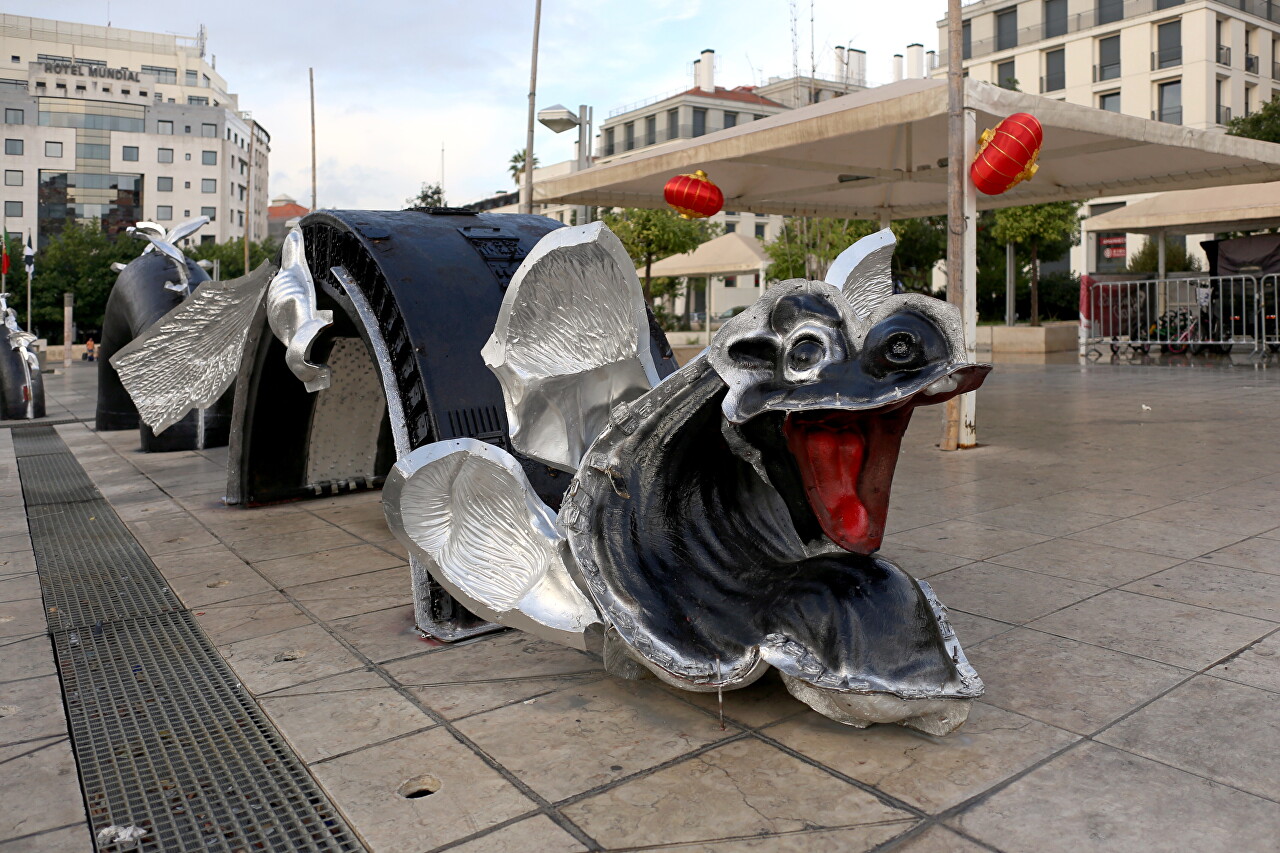
The structure is made of fiberglass and decorated with many printed circuit boards from industrial equipment.
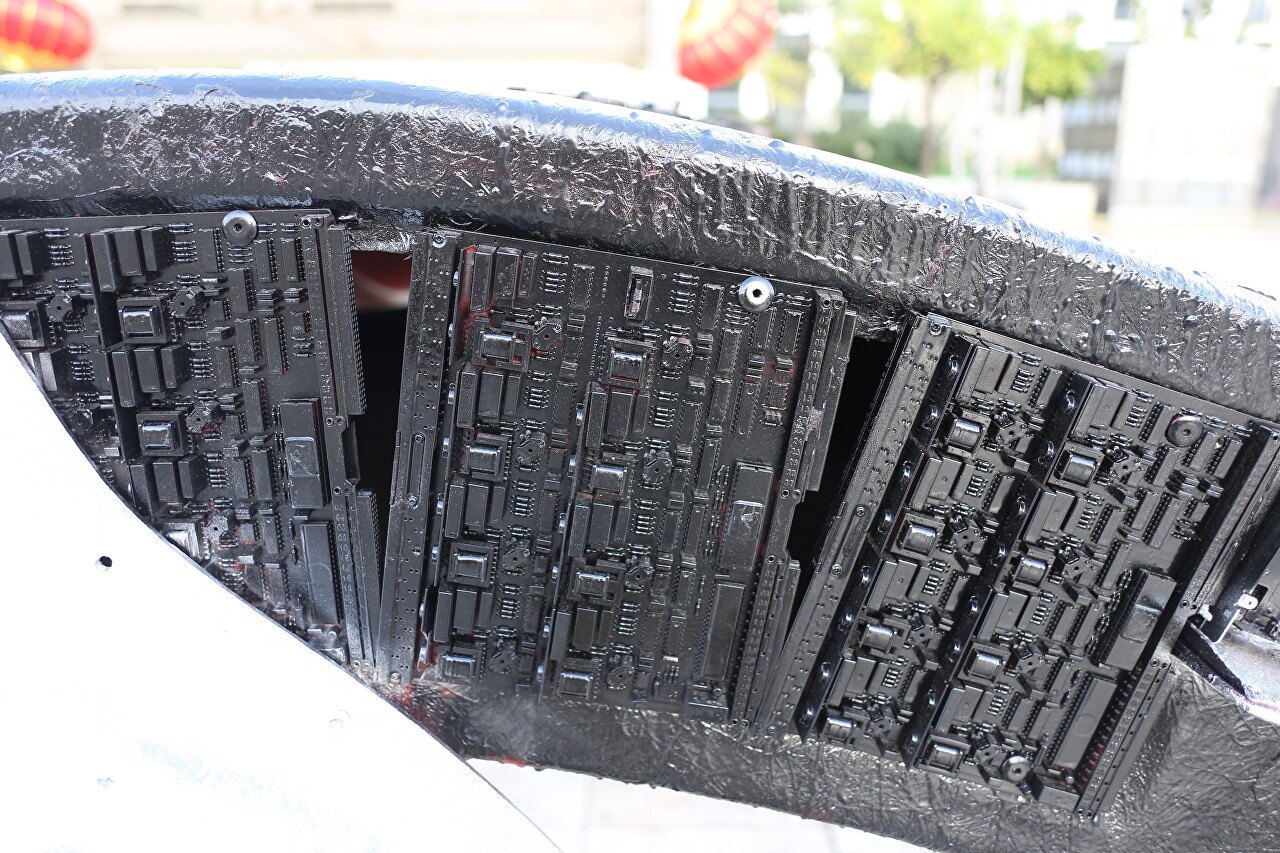
The northern end of the square, next to the metro entrance, is decorated with a Portuguese rooster, created by sculptor Rui Miragaia. In fact, the author is a hereditary blacksmith and specializes in artistic metal products. Here he used epoxy resin and newspapers as a material. The rooster turns on the pedestal and twirls its head. I think it was original and cute.
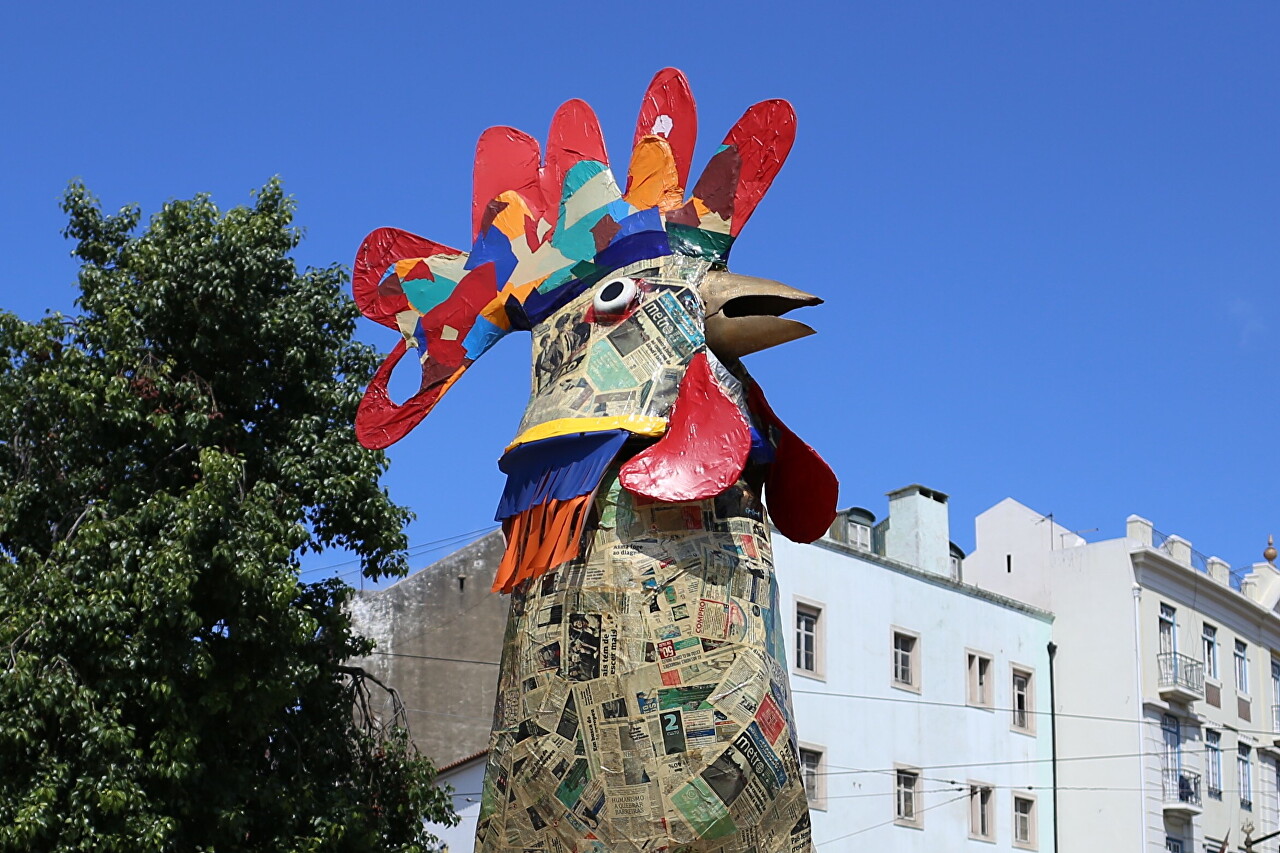
On the east side of the square is the Chapel of Our Lady of Healing (Capela de Nossa Senhora da Saúde). It was built in 1505 on the initiative of the gunners of the Lisbon garrison and consecrated in the name of San Sebastian, as a deliverer from the plague. In 1662, it received its current name. The building was badly damaged during the Great Lisbon Earthquake of 1755, and was only restored in the early 18th century. Inside, you can see ceramic panels, presumably the work of the famous master Antonio de Oliveira. Unfortunately, you didn't get a chance to look inside, you passed by several times, but the temple was closed. The space in front of the chapel is a mosaic made by the famous Portuguese muralist Eduardo Neri, depicting the projection of its facade.
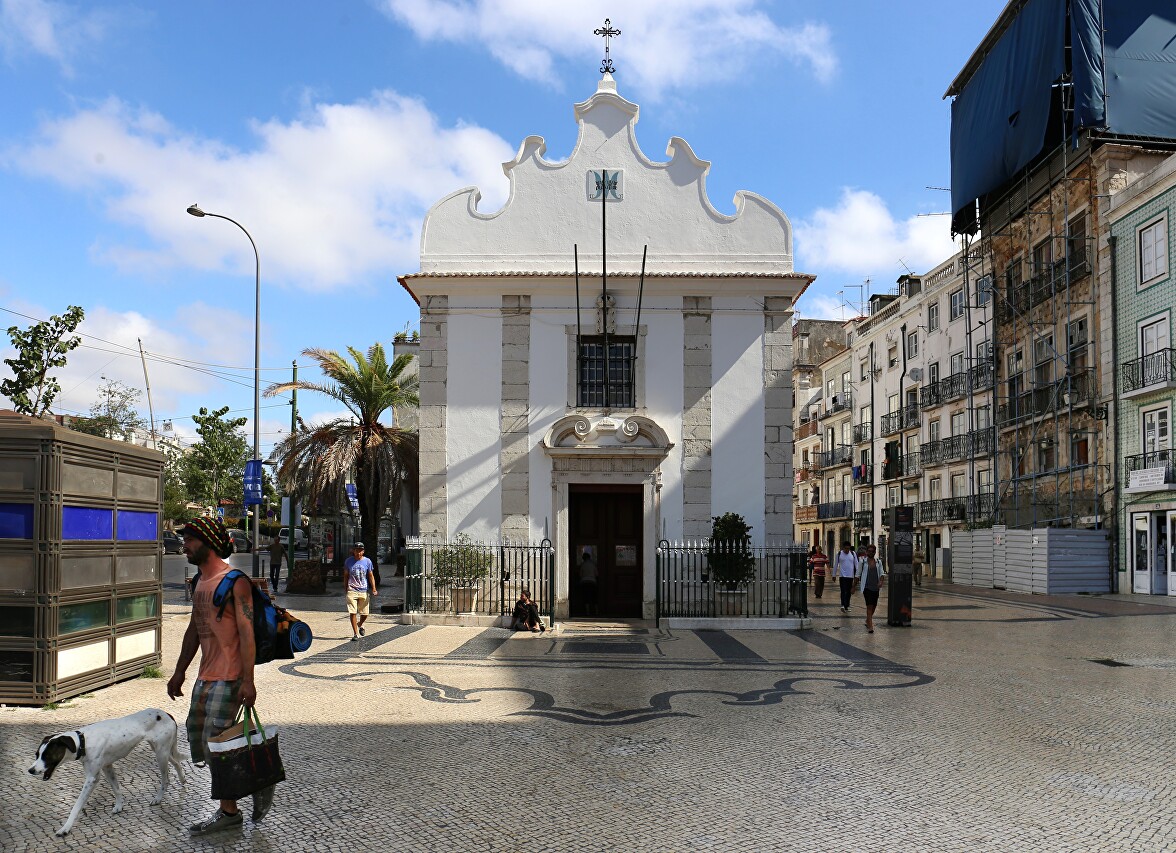
The N28 tram starts right next to the chapel, which runs through Lisbon's old districts and is popular with tourists and locals.